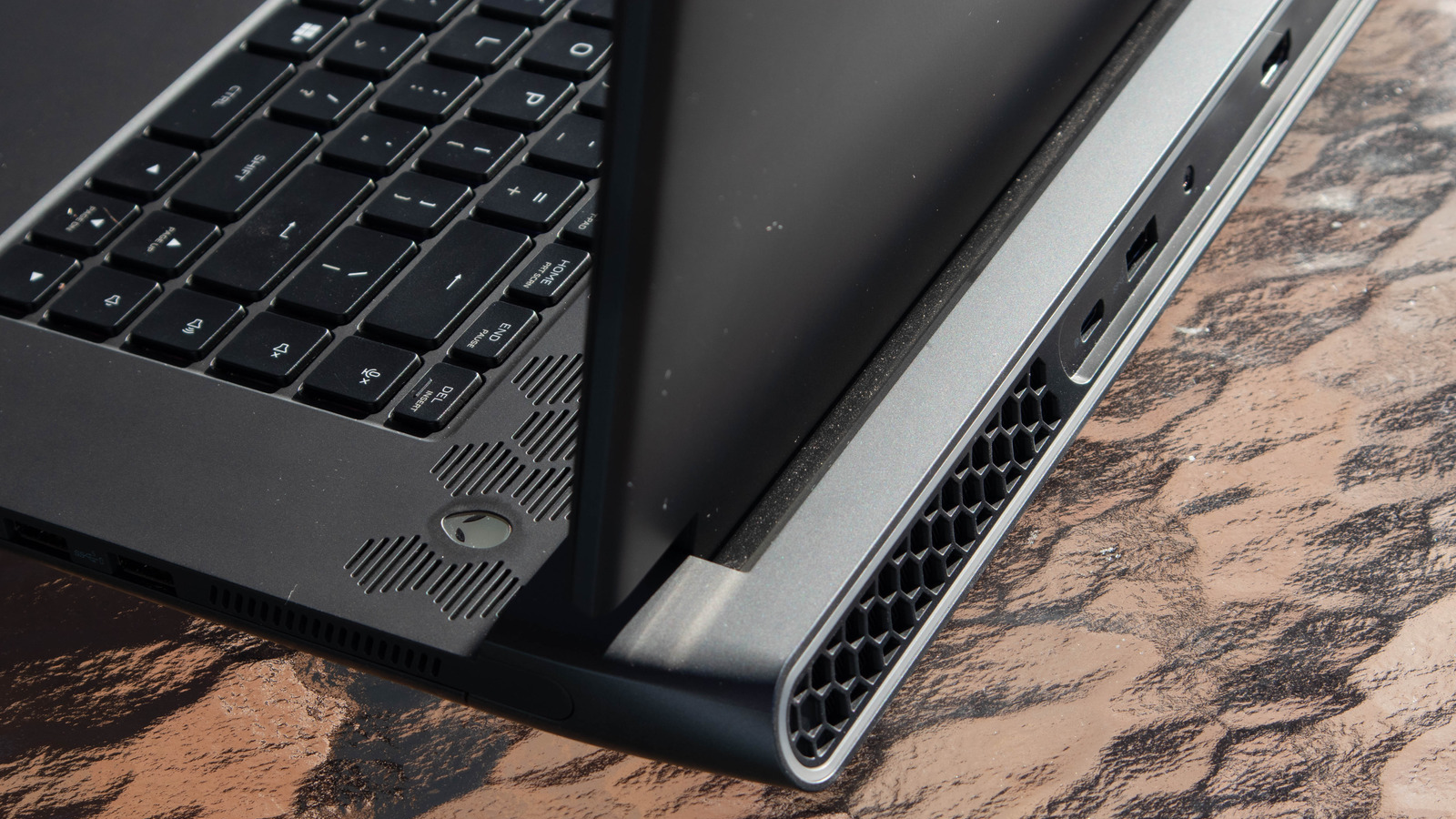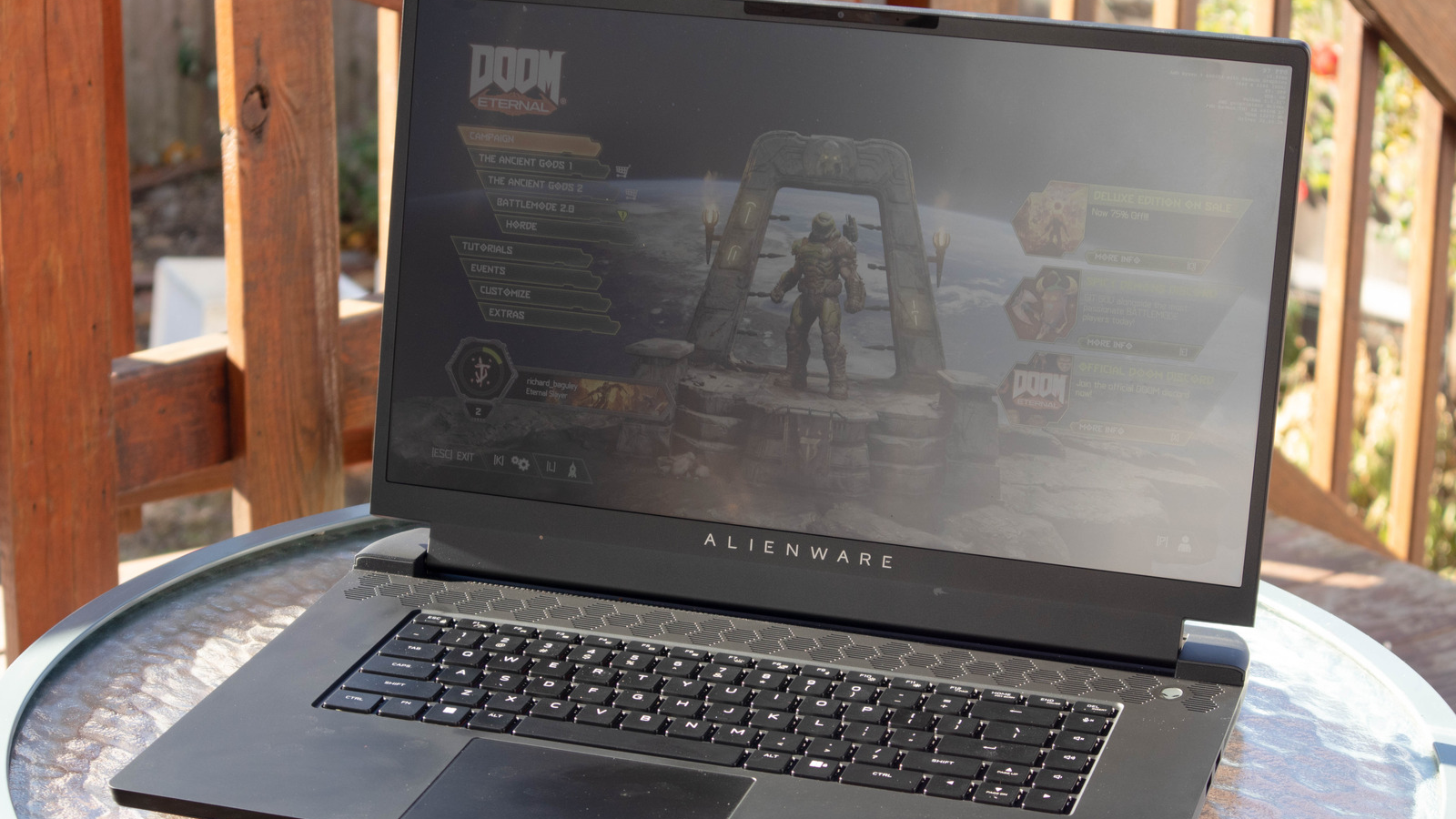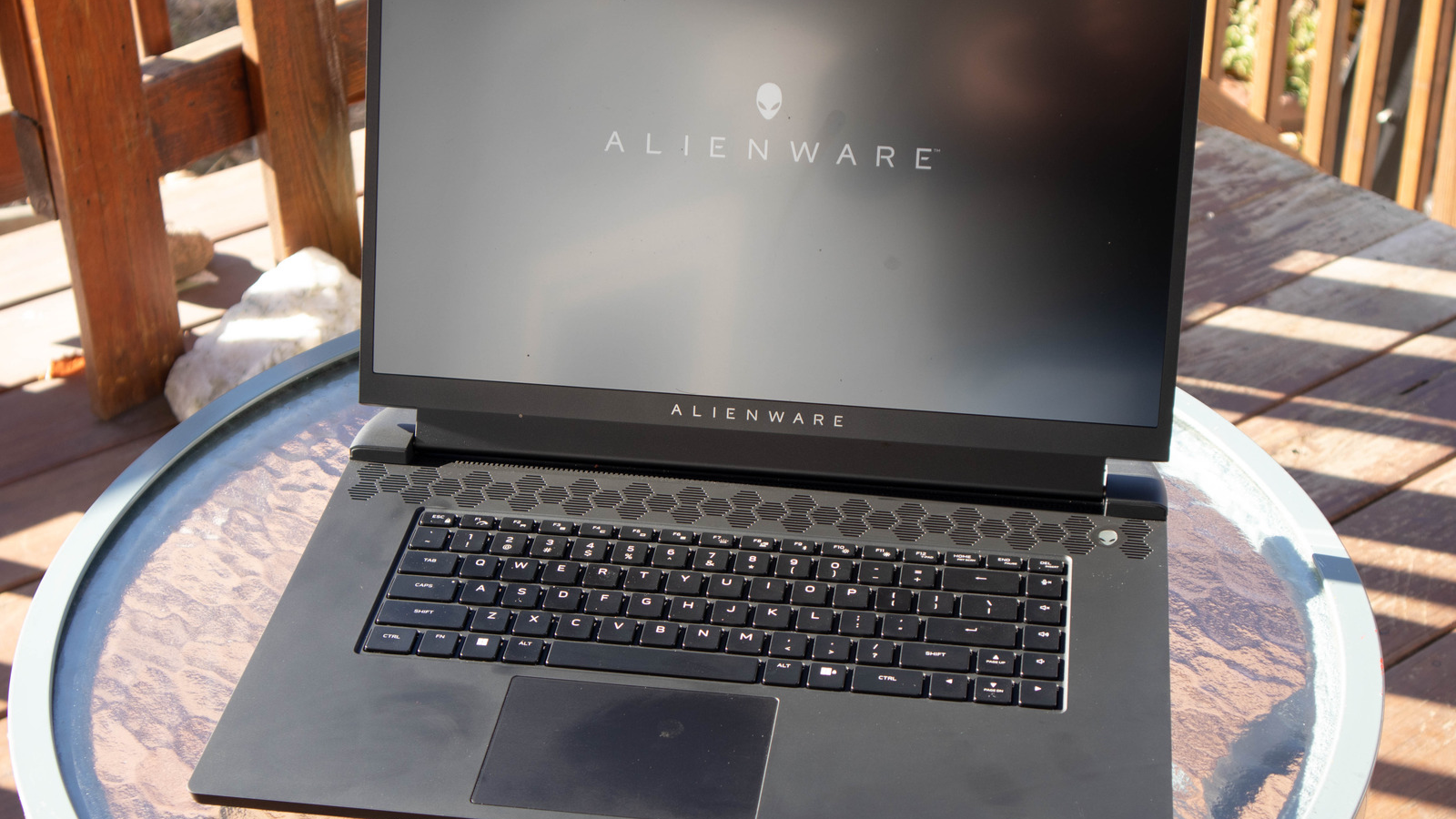Alienware M17 R5 AMD review: a powerful gaming laptop at a decent price
This is a well-priced laptop with enough power to handle most modern games.


The Alienware M17 R5 AMD is a hefty, capable and affordable gaming laptop. It doesn’t deliver quite the graphics punch of its Intel and Nvidia-equipped cousins, but the AMD processor is fast enough to run most modern games at high resolution.
-
+
Very good performance
-
+
Games look great on the hi-res, bright screen
-
+
Relatively affordable for a gaming laptop
-
-
Crashes with some games
-
-
Noisy fans and a large power adapter
-
-
Battery life is better than many of its peers, but still not long
Why you can trust T3

Gaming laptops tend to be dominated by Intel processors, but there are always other possibilities. AMD has been making significant strides in the market, undercutting Intel and offering cheaper, more powerful processors and graphics processing unit (GPU) combinations. That means less expensive laptops that still have plenty of gaming oomph.
Such is the case with the Alienware M17 R5, which uses an AMD processor and GPU for a well-priced combination that has enough power to handle most modern games. Read on to find out how the Alienware M17 R5 performed, and if that’s enough to get it onto our list of the best gaming laptops. Learn more about how we test products.

The Alienware M17 R5 AMD fans are noisy when it's in gaming or performance mode.
ALIENWARE M17 R5 AMD REVIEW: DESIGN AND BUILD
I tested an Alienware M17 R5 AMD that has an AMD Ryzen 9 6900HX processor with eight cores running up to 4.9 GHz and a Radeon RX 6850M XT GPU with 32GB of DDR5 RAM and a 1TB SSD.
The M17 R5 is an impressive slab of a laptop, weighing in at a hefty 7.56 pounds. That’s before you add in the two-pound 240 W power adapter, which is a beast. Really: I’ve owned laptops that were smaller than the power adapter of the R5. And you’ll need the power adapter if you take the M17 anywhere because the battery life is not great.
The M17 has the standard Alienware design, with a glowing alien head on the back of the screen and an extended back tail that pokes out from behind the screen. Vents on the bottom of the case suck in air, then vent it out of the back at a higher temperature.
These fans are pretty quiet when you aren’t gaming, running in a slow mode that is barely audible. But fire up a game or enable the Overdrive performance mode, and the M17 turns into a jet engine, with whooshing fans that threaten to overwhelm the sound of the game. Most of this noise is directed away from the user, but those who share your space may not appreciate a roaring faceful of warm air.

On the right side of the laptop, there is an HDMI 2.1 port, a USB 3.2 Gen 1 port and a USB 3.2 Type-C port.
ALIENWARE M17 R5 AMD REVIEW: SPECS AND HARDWARE
At 17.3 inches, the screen of the M17 R5 AMD is a monster. My review model had a UHD resolution (3840 x 2160 pixels) that runs up to 120Hz for high-frame-rate gaming. There are several other options available, including 165Hz, 360Hz, or the new record, a 480Hz Full HD version. Like most gaming laptops, all of these are non-touch screens.
Get all the latest news, reviews, deals and buying guides on gorgeous tech, home and active products from the T3 experts
The UHD display I tested was excellent, with clear, bright whites (at a maximum brightness of 495 candela per square meter) and deep blacks. The display supports HDR400 and Dolby Vision for 4K HDR gaming. Above is a 720p webcam with IR cameras that support logging on with Windows Hello using facial recognition.
The keyboard on my review model used Cherry MX ultra low-profile switches for a satisfying feel. Each key also includes an RGB LED backlight, making things glow or pulsate as much as you want. The large keys offer the positive and clicky feel that makes mechanical keyboards satisfying to bash away at, and the keyboard and laptop frame feels solid enough that they should stand up to the most ardent of users.
There are also plenty of connections for peripherals, gaming, or otherwise. On the left is a 3.5mm headset socket, plus a 2.5G wired ethernet connection with a fold-down cover. Two USB 3.2 Gen 1 ports are on the right side, while the rear of the case offers the power input, an HDMI 2.1 port, another USB 3.2 Gen 1 port, and a USB 3.2 Type-C port. There are no Thunderbolt 4 connections, though, and the proprietary power adapter is the only way to charge the laptop.

The Alienware M17 R5 laptop excels in first-person games.
ALIENWARE M17 R5 AMD REVIEW: GAMING AND PERFORMANCE
It’s all about the games, and the M17 R5 offers plenty of performance to handle them. The power is not record-breaking, but it’s plenty good, and the games look great on the big, bright screen.
The M17 R5 AMD excelled in the first-person games that are most popular on gaming laptops. I could play Doom Eternal at the native resolution of the screen on the most demanding ultra nightmare graphics settings, and it still managed to create 120 frames per second for a wonderfully smooth, fast-moving demon-ripping experience.
The racing game F1 22 proved to be a bit more of a strain. Using the built-in benchmark to run a race on a rainy day in Monaco, I got an average of 15 frames per second at the native resolution of the screen with the graphics set to the Ultra High preset. The game was still playable, but it was struggling.
Dropping the resolution to 1920 x 1080 made it much better, with an average rate of 50 frames per second. With a bit more tweaking – particularly bumping down the quality of ray tracing – I got it to an average of 90 frames per second, which was very smooth and realistic.
The M17 R5 AMD also scored highly in the graphics benchmarks I tried, managing a score of 11993 in the 3DMark Time Spy test. That put it in the upper reaches but not at the top of the range for gaming PCs, a category dominated by laptops that use the Nvidia RTX 3080 Ti graphics chip. These are more expensive, though: a similar Alienware M17 model with this faster chip would cost you an additional $400.
I found a few quirks with the M17 R5 AMD. When exiting a game, the display would sometimes blank out for a few seconds, or the mouse would not respond, giving the impression it had crashed. Some non-FPS games also failed to start. The factory-building game Factorio, for instance, crashed every time I ran it until I figured out how to set it to use OpenGL graphics instead of DirectX.
The problem is related to how the graphics drivers switch from the graphics adapter integrated into the processor to the dedicated one. Some programs don’t realize it has switched over, and it looks like the graphics card has failed. It’s a minor issue, but having a $2,200 laptop that can’t play a game without being tweaked is pretty annoying.
To be fair, these problems often arise with a new graphics chip, and they are usually fixed in time with updates to the graphics drivers. This issue wasn’t fixed at the time of writing, however.
ALIENWARE M17 R5 AMD REVIEW: BATTERY LIFE
The Alienware M17 R5 AMD is a big, heavy laptop, and a lot of that size is the large, 97 watt-hour battery inside it. That doesn’t equate to a long battery life, though.
I found that the battery lasted four hours and six minutes when playing back a movie with the screen on medium brightness. That’s on the short side, and it gets even shorter when you start gaming. When playing Doom Eternal, the battery lasted less than an hour.

The 17.3-inch Alienware M17 R5 AMD screen is big and bright, even outside.
ALIENWARE M17 R5 AMD REVIEW: VERDICT
The Alienware M17 R5 AMD is a powerful gaming laptop at a decent price. It doesn’t deliver quite the graphics punch of its Intel and Nvidia-equipped cousins, but it’s fast enough to run modern games at high resolution. So, it’s a good pick to save some money and still be the envy of the gaming crowd – as long as you aren’t playing one of the games that glitch out on it.
ALIENWARE M17 R5 AMD REVIEW: ALSO CONSIDER
The gaming laptop market is very competitive, especially at the high end. Our best gaming laptops list is filled with devices that can ace most modern games. However, most of these models have 15-inch screens, such as the Dell G5 15 5500, so you have to step outside that list for 17-inch laptops.
One alternative would be the Razer Blade 17, which has a similar performance, thanks to its Nvidia RTX 3080 Ti graphics chip, but generally costs more. Alternatively, the Asus ROG Zephyrus S17 has a similar performance to the Dell G5 15 5500 but also is a bit more expensive.

Richard Baguley has been writing about technology since the 1990s, when he left a promising career in high finance to work on Amiga Format magazine for Future. It has been downhill for him ever since, writing for publications such as PC World, Wired and Reviewed.com. He has tested gadgets as diverse as 3D printers to washing machines. For T3, he covers laptops, smartphones, and many other topics. He lives near Boston in the USA with his wife, one dog, and an indeterminate number of cats.